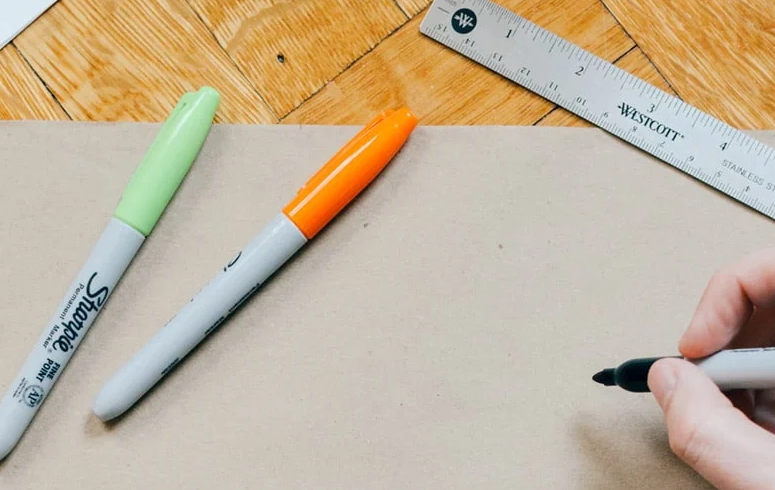Choose the best pens for technical drawing. Mechanical pencils, technical albums, compasses, rulers, squares, masks, curvilinear lines, markers. The world of technical drawing is full of the most disparate accessories. However, to objectively transmit geometric information on a two-dimensional plane – the primary purpose of technical drawing – it is, in fact, necessary to be able to use the best and most precise tools, starting with pencils, but also with graduated tip markers.
And it is precisely the latter that we will talk about in this article. Based on which characteristics is it possible to choose the most suitable technical drawing pens for your purposes? Together in this guide, we will find out dedicated from start to finish to technical pens in all their forms.
Table Of Contents
Pens for technical drawing
The technical drawing pens are specially designed to be used together with lines, squares, and masks, to be able to create precise, faithful, complete, and transferable representations about the design of a given object. Therefore, the primary recipients are precisely the technical designers and thus professionals in architecture and engineering. However, it is not uncommon for people to purchase technical drawing pens for other purposes, such as calligraphy, artistic ink drawing, or even for the creation of comics. The characteristics that are appreciated even by non-technicians are the stability of the ink, the precision of the lines, and the cleanliness of the drawing.
The pens for technical drawing, in any case, are very different from the normal pens that you can generally buy at newsstands. And it’s not all here: even among the technical pens, there are different types to meet the needs of all designers, from architects to illustrators. With the progressive spread of CAD software, many had thought that the pens for technical drawing would gradually disappear. Yet this is not the case: many technical designers still prefer the sheet of paper, graphite, pens, and squares to computers, and these are accompanied by all the people who, far from having particular architectural or engineering skills, use pens techniques for other purposes, and therefore to illustrate and to create cool drawings.
The thicknesses of the pens for technical drawing

A peculiar characteristic of the technical pens is that of presenting, for each model, different thicknesses, which are often defined according to the real needs of the technical designers, and therefore about the ISO standards. Generally speaking, liner pens with thicknesses from 0.05mm to 2mm can purchase. In this way, therefore, it is possible to draw fragile lines and very thick lines, always with the guarantee of maximum precision and cleanliness. Moreover, whatever the chosen thickness, stability will always be higher than that offered by normal pens on the market, with a minimum – practically zero – variation in the thickness of the mark left on the sheet.
Another characteristic feature of the technical drawing pens is the metal coating of their tip, which thus allows the comfortable and precise use of lines, squares, and masks: the support against the edge of these tools is always perfect.
A concise history of technical pens
As is well known, technical drawing was born at the end of the 18th century, together with the First Industrial Revolution. The first technical pens were adjustable, with the thickness of the line varying according to the variation of the adjustment of the two final components of the instrument. As you can imagine, the maintenance required was very high, multiplied by the fact that they were still immersion pens, which therefore had to be constantly recharged during use. Only later, technical drawing pens were made that could contain their ink, and therefore easier to handle, with a level of maintenance required reduced to zero.
Types of pens for technical drawing
Regardless of the thickness of the nib, there are mainly three different types of technical drawing pens. Firstly, there are refillable ink pens, which are not very popular and require a high level of maintenance. Some look at these instruments as remnants of the past, intended only for nostalgics; others, on the other hand, see it as a more precise accessory than modern examples. These technical pens cost more than the standard models, but this higher initial investment can then be a winner refill after refill, as the ink is relatively cheap. However, it should emphasize that these pens require very particular attention and a good cleaning: if the ink is allowed to dry inside the nib, the entire instrument will throw away.
Then there are the normal non-refillable technical pens, undoubtedly the most popular, for ease of use and affordable price. Finally, there is the compromise, consisting of refillable cartridge pens. When the ink runs out, the nib is transferred to a new cartridge, which makes up the entire body of the cell.
Choose the technical drawing pen according to the type of ink
A very intense ink characterizes all technical drawing pens. In most cases, it is water-based ink; sometimes, however, there are technical pens with oil-based ink, which have a single great advantage: with these pens, it is, in fact, possible to write and draw even on glossy media, such as on photographs. However, most illustrators and technical designers do not have this need, and for this reason, water-based ink pens are, in general, a great choice, thanks to the greater control of the line.
Also Read: Digital Marketing
